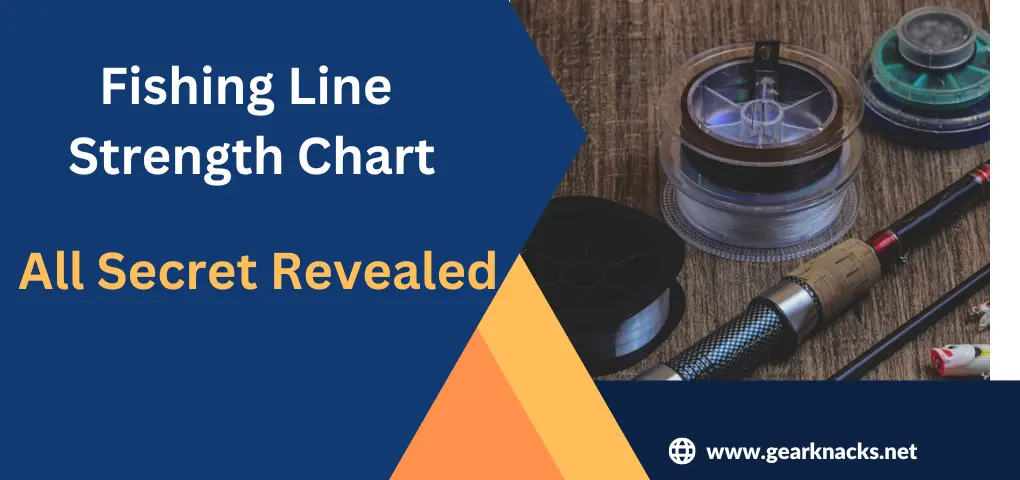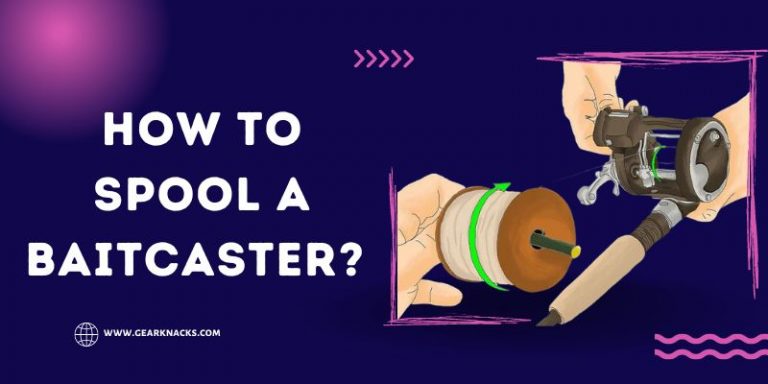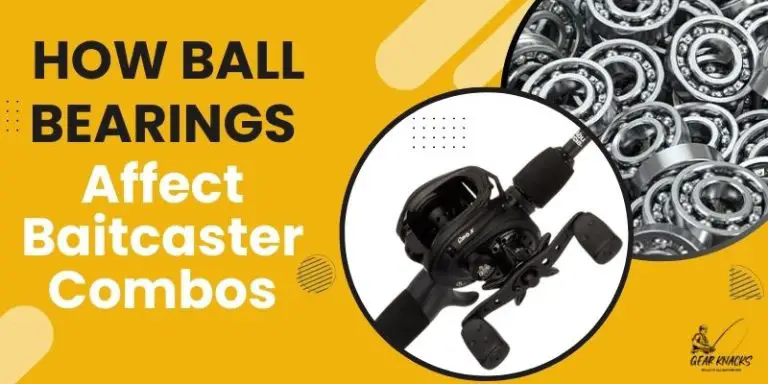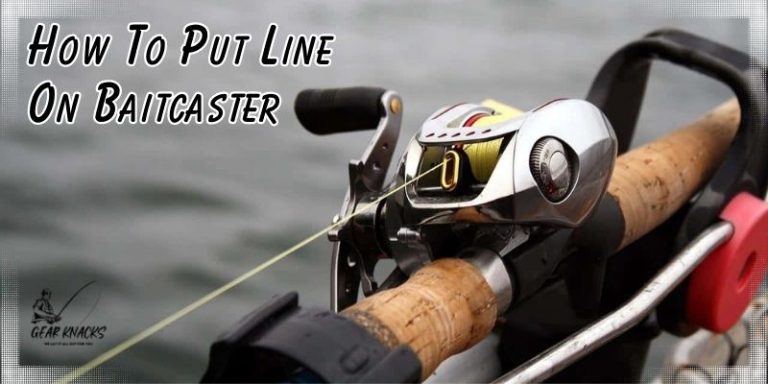Fishing Line Strength Chart (Mono, Braid & Fluoro)
The fishing line strength chart is a valuable resource that provides information about the breaking strength of different fishing lines. It typically lists various line types (monofilament, fluorocarbon, braid), along with their corresponding pound test ratings. This chart serves as a reference point to help anglers select the most suitable line for their specific fishing needs.

Interpreting the strength chart is relatively straightforward. Each line type is associated with a range of pound test ratings, such as 4-10 lbs or 12-20 lbs. These ratings indicate the amount of force the line can withstand before breaking. For instance, a 4-10 lbs monofilament line can bear between 4 to 10 pounds of pressure before snapping.
Several factors can influence the actual strength of a line, including its age, wear and tear, and knot tying techniques. As you’ll discover in the following sections, understanding these factors is essential for selecting the right pound test and maximizing your chances of landing that prized catch.
Also Read: Best Line For A Baitcaster Reel | Top 5 Reviewed
Fishing Line Strength Chart by Type of Line
There are number of fishing lines on the market and it makes us confuse between braided, mono and fluoro line that which one we should choose.
Fluorocarbon Fishing Line Test Results
Fluorocarbon lines excel in situations where invisibility is key. Due to their refractive index similar to water, fluorocarbon lines are nearly invisible underwater, making them an ideal choice for wary fish in clear waters. They also have minimal stretch, allowing for increased sensitivity and better hook sets.
| Breaking Strain (lb) | Diameter (inches) | Diameter (mm) |
|---|---|---|
| 4lb | 0.007 | 0.17 |
| 6lb | 0.009 | 0.22 |
| 8lb | 0.010 | 0.25 |
| 10lb | 0.011 | 0.27 |
| 12lb | 0.012 | 0.30 |
| 14 | 0.013 | 0.33 |
| 17 | 0.015 | 0.38 |
| 20 | 0.016 | 0.40 |
| 30 | 0.020 | 0.50 |
| 40 | 0.022 | 0.55 |
Monofilament Fishing Line Test Results
Monofilament lines are known for their versatility and forgiving nature. They offer excellent shock resistance and are well-suited for various fishing styles, from freshwater to saltwater. Monofilament lines are also relatively affordable and easy to handle, making them a popular choice among anglers.
| Breaking Strain (lb) | Diameter (inches) | Diameter (mm) |
|---|---|---|
| 4 | 0.008 | 0.20 |
| 6 | 0.009 | 0.22 |
| 8 | 0.010 | 0.25 |
| 10 | 0.011 | 0.27 |
| 12 | 0.013 | 0.33 |
| 14 | 0.014 | 0.35 |
| 17 | 0.015 | 0.38 |
| 20 | 0.016 | 0.40 |
| 25 | 0.018 | 0.45 |
| 30 | 0.020 | 0.50 |
Braided Fishing Line Test Results
Braided lines are renowned for their incredible strength-to-diameter ratio. They offer minimal stretch, allowing you to feel even the slightest nibble from a fish. Braided lines are excellent for heavy cover and situations where you need to set the hook quickly. However, they may be more visible in clear water and require careful handling.
| Breaking Strain (lb) | Breaking Strain (kg) | Diameter (mm) | Comparable Diameter Mono |
|---|---|---|---|
| 3 | 1.5 | 0.06 | <1 |
| 5 | 2.5 | 0.1 | <1 |
| 8 | 4 | 0.1 | 1 |
| 10 | 5 | 0.15 | 2 |
| 15 | 7 | 0.19 | 4 |
| 20 | 10 | 0.23 | 6 |
| 30 | 14 | 0.28 | 8 |
| 40 | 18 | 0.32 | 10 |
Chart by Species: Bass, Trout, Catfish, Salmon, Panfish, and More
| Breaking Strength | Fish |
|---|---|
| 3-6lb | Crappie, bluegill, trout, smallmouth bass |
| 6-10lb | Walleye, Largemouth Bass, Salmon, Sea Trout |
| 10-20lb | Catfish, Carp, Sea Bass, Pike, Musky, Salmon, Steelhead |
| 20lb plus | Redfish, Striped Bass, Mackarel, Tuna, Sharks, Cobia |
Understanding Pound Test in Fishing Lines
Pound test, often referred to simply as “test,” is a measure of a fishing line’s strength. It indicates the amount of force (in pounds) that the line can endure before breaking. Selecting the right pound test is crucial because using a line with insufficient strength can result in lost fish, while using a line with excessive strength may reduce sensitivity.
Choosing the appropriate test depends on various factors, including the type of fish you’re targeting, your fishing technique, and the fishing conditions. Lighter tests, such as 4-8 lbs, are suitable for finesse fishing and targeting small to medium-sized fish. In contrast, heavier tests, like 20-50 lbs, are ideal for battling larger species or fishing in heavy cover.
Fishing conditions play a significant role in selecting the right test. In clear and calm waters, where visibility is high, lighter lines with lower tests may be necessary to avoid spooking fish. In contrast, murky or dense cover environments may require heavier lines to handle the rough terrain and potential snags.
The Role of Line Diameter
Line diameter is a critical factor that affects a line’s performance. Thinner lines have less water resistance, allowing for easier casting and improved sensitivity. They also have greater line capacity on reels. On the other hand, thicker lines offer added strength but may be more visible in the water.
How to select the right line diameter?
Choosing the appropriate line diameter depends on your fishing goals and the specific conditions you’ll be facing. If finesse and sensitivity are paramount, opt for a thinner line. Conversely, if you’re targeting larger, more powerful fish or fishing in rough terrain, a thicker line may be necessary to withstand the stress.
Advantages of smaller diameter lines
Smaller diameter lines offer several advantages, including longer casts, increased sensitivity, and improved lure action. When paired with the right pound test, a smaller diameter line can help you finesse your way to success, especially in situations where precision and stealth are key. To find a top line for your rod please refer to the diameter chart
Mono Line vs. Fluoro Line vs. Braid: Which One to Choose?
Strength of the line and weaknesses of each type
Different types of lines – monofilament, fluorocarbon, and braided – comes with its own set of strengths and weaknesses. Understanding these attributes can help you make an informed choice.
Best applications for monofilament, fluorocarbon, and braided lines
Monofilament is an excellent all-around choice for various fishing situations, especially for beginners. Fluorocarbon shines in clear water scenarios, where stealth and sensitivity are crucial. Braided lines are perfect for heavy cover and situations where strength and quick hook sets are essential.
Combining braid and fluorocarbon for the best of both worlds
Some anglers choose to combine braided and fluorocarbon lines to capitalize on the strengths of both. This involves using braided line as the mainline for its strength and sensitivity and attaching a fluorocarbon leader for its invisibility in clear water.
Factors Affecting Fishing Line Strength
Choosing the Right Fishing Line for Your Reel
Fishing Lines for Specific Types of Fishing
Freshwater vs. saltwater fishing lines
The type of water you’re fishing in makes a significant difference in your line selection. Saltwater conditions can be harsher, requiring corrosion-resistant lines, while freshwater lines can be more forgiving.
Specialized lines for trout, bass, and more
Different species of fish may demand specific types of lines. For instance, trout fishing often benefits from light, sensitive lines, while bass fishing may require heavier lines to handle larger fish.
How line choice impacts your fishing technique
Your line choice can influence your fishing technique significantly. Lighter lines allow for finesse techniques, while heavier lines can handle aggressive, power-based approaches.
Maintaining Your Fishing Line’s Strength
FAQ’s
What Is Drag on a Fishing Reel?
The drag on a fishing reel is a crucial component that allows you to control the amount of resistance a fish encounters when it pulls on your line. It’s like a brake system for your reel, preventing the line from breaking when a fish makes a strong run. Adjusting the drag appropriately is essential to avoid overloading your fishing line and losing the fish.
What Fish Is 6lb Line Good For?
A 6lb fishing line is generally suitable for catching smaller to medium-sized fish. It’s ideal for freshwater fishing and can handle species like trout, panfish, bass, and walleye. However, the choice also depends on factors like the specific fish’s size, your fishing technique, and the fishing conditions.
What Fish Is 10lb Line Good For?
A 10lb fishing line is a versatile choice that can handle a wide range of fish species. It’s suitable for catching larger freshwater fish like bass, catfish, and pike. Additionally, it can be used for light saltwater fishing, targeting species such as speckled trout and small redfish.
What’s a Good All-Around Fishing Line Strength?
A good all-around fishing line strength often falls in the range of 8 to 12 pounds. This pound test is versatile enough to handle a variety of fish species in both freshwater and light saltwater conditions. It strikes a balance between strength and sensitivity, making it a popular choice among anglers.
What Is the Strongest Type of Fishing Line?
Among the various types of fishing lines, braided lines are known for their unmatched strength. They can have pound test ratings that exceed other lines of the same diameter, making them ideal for targeting large and powerful fish or fishing in heavy cover.
What type of fishing do you plan to use the line for – fresh or salt water, bait or fly-fishing?
Your choice of fishing line should align with your specific fishing plans. Consider whether you’ll be fishing in freshwater or saltwater environments and whether you’ll be using bait or engaging in fly-fishing. These factors will help you narrow down your options and select the most suitable line.
How much line do you need on your reel?
The amount of line you need on your reel depends on various factors, including the reel’s line capacity, the type of fishing you’ll be doing, and the species you’re targeting. It’s essential to fill your reel to an appropriate level, leaving enough room for effective casting and line management.
How much weight can fishing line handle?
The weight a fishing line can handle is determined by its pound test rating. Different lines have varying strengths, and their capacity to handle weight depends on their specific pound test. Refer to the fishing line strength chart to determine the weight capacity of your chosen line.
How to test line strength?
Testing line strength involves applying gradual pressure to the line until it reaches its breaking point. You can use a line testing tool or simply tie the line to a secure anchor and apply tension until it breaks. Keep in mind that real-world conditions, such as knots and environmental factors, can affect a line’s strength, so always consider these aspects when selecting your line for fishing.
Conclusion: Key Takeaways
In summary, fishing line strength is a critical factor that can significantly impact your angling success. To choose the right pound test, consider the type of fishing you’ll be doing, the fish species you’re targeting, and the environmental conditions. Understanding the fishing line strength chart, line diameter, and the attributes of different line types (monofilament, fluorocarbon, braid) will enable you to make informed decisions.
Remember, a well-matched fishing line enhances your overall fishing experience, increasing your chances of landing that dream catch. So, whether you’re a seasoned angler or just starting, invest time in understanding and selecting the right fishing line for your next adventure. By doing so, you’ll be well-prepared to tackle any fishing challenge that comes your way.






